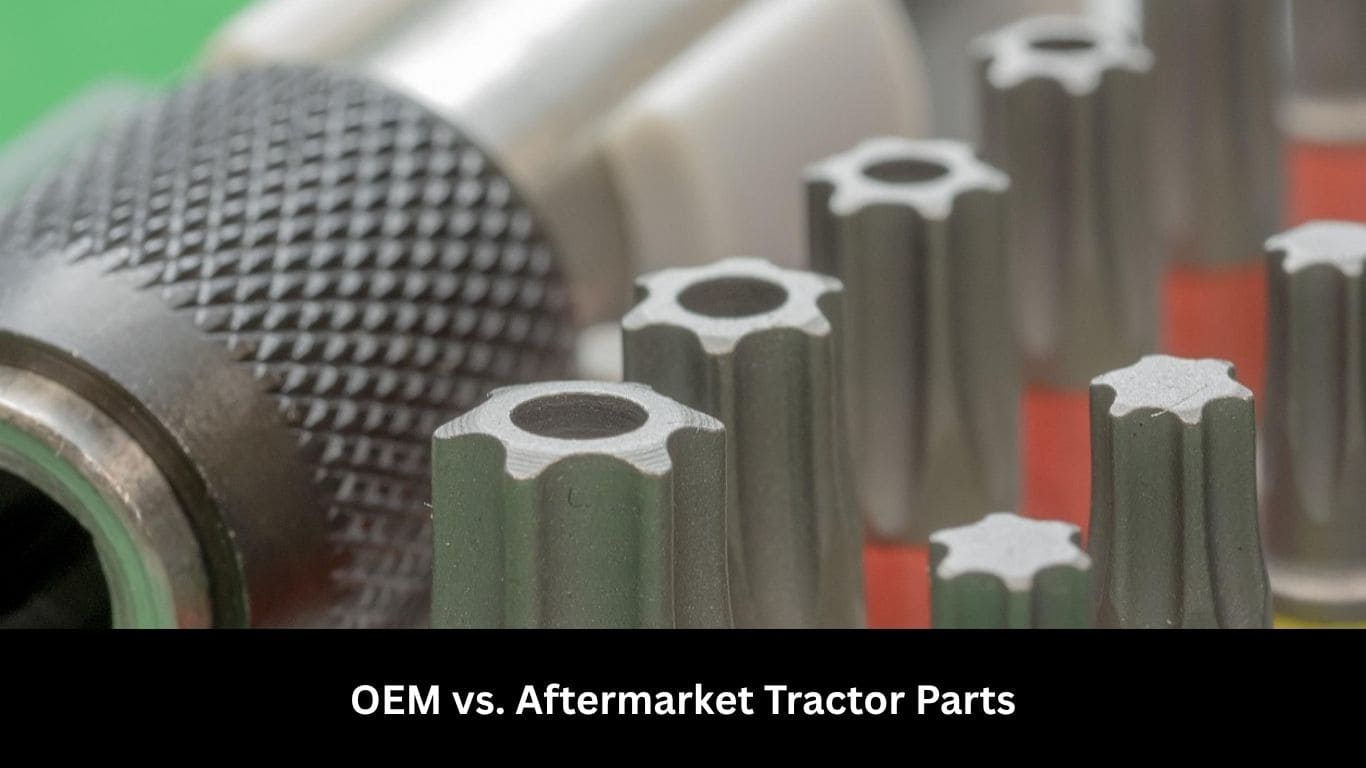In India, tractors are a vital part of every farming operation. Whether you’re cultivating sugarcane in Maharashtra or harvesting wheat in Punjab, keeping your tractor in top shape is essential. When parts wear out, farmers often face a crucial question: Which one to opt for, between OEM and Aftermarket tractor parts?
Table of Contents
This guide outlines 9 must-know facts to help you make the best decision of choosing between OEM and aftermarket tractor parts, which is based on cost, durability, performance, and more.
1. What’s the Difference Between OEM and Aftermarket tractor parts?
OEM (Original Equipment Manufacturer) Parts
These are made by the manufacturer who directly supplies to tractor companies. They’re known for quality and precision, often sold at higher prices through authorized outlets.
Aftermarket Parts
Manufactured by third-party companies or are mostly distributors and dealers, who buy from OEMs, these parts are typically more affordable and widely available. While quality varies, trusted brands can offer great value.
2. How both OEM and Aftermarket tractor parts work in the Field
- OEM parts are designed to match your tractor’s systems, ensuring smooth function and consistent output.
- Aftermarket parts can deliver similar results, especially from established manufacturers. However, generic or low-cost versions may impact performance over time.
3. Built to Last: Durability in Indian Conditions
- OEM components undergo testing for weather resistance, rough terrain, and heavy use—perfect for the diverse climates across India.
- Well-made aftermarket parts, like those from third-party companies, distributors, and wholesalers, also perform reliably. However, be cautious—cheap, unverified products often fail to withstand demanding conditions.
Also Read: Mahindra Tractor Clutch Plates
4. Comparing The Price Details of OEM and Aftermarket tractor parts
| Component | OEM Price | Aftermarket Price |
| Clutch Plate Set | ₹4,000 – ₹6,500 | ₹2,500 – ₹4,000 |
| Hydraulic Pump | ₹6,000 – ₹8,000 | ₹3,800 – ₹5,500 |
| Brake Assembly | ₹2,500 – ₹4,000 | ₹1,800 – ₹3,200 |
Using aftermarket parts can reduce expenses by up to 50%, especially for older tractors or seasonal machinery.
5. Warranty and Support: What’s Covered?
- OEM parts usually include manufacturer warranties (6–12 months) and technical assistance if installed through official service channels.
- Aftermarket parts might come with shorter or no warranty. Still, some reliable brands now offer basic coverage for added assurance.
6. Fitting and Compatibility
- OEM parts fit precisely without the need for adjustments.
- Aftermarket parts may require minor modifications. When not properly matched, performance issues can arise, so compatibility checks are essential.
7. Which Is Easier to Find?
- OEM parts are mainly available through authorized dealers and wholesalers, often requiring more effort or time to source.
- Aftermarket parts are easily found in local markets and online platforms like Alibaba, Moglix, or Amazon India, making them ideal for farmers in remote areas.
8. Quality Standards and Checks
- OEM components follow strict factory testing and are certified by industry standards like ISO and BIS.
- High-quality aftermarket brands also comply with rigorous checks, but always avoid no-name or imported parts with no visible quality assurance.
9. Expert Tips for Tractor Owners in India
- Stick with OEM for new tractors still under warranty.
- Choose only reliable aftermarket parts when dealing with out-of-warranty or older models.
- Always verify compatibility with your tractor model and research the brand’s credibility before purchase.
✅ Frequently Asked Questions (FAQs)
1. Can aftermarket parts be trusted?
Yes, if you choose products from well-reviewed and known companies. Avoid generic, low-cost parts with no brand or certification.
2. Will using non-OEM parts affect my warranty?
It could. Most manufacturers require OEM parts during the warranty period. Always confirm with your service provider.
3. How do I verify genuine OEM parts?
Check for product codes, holograms, and original packaging. Only buy from certified dealers or service centers.
4. Are aftermarket parts good for older tractors?
Definitely. When warranties no longer apply, using high-quality aftermarket components is a smart, cost-saving decision.
5. What are the dangers of using low-grade aftermarket parts?
These may fit poorly, wear out quickly, or even damage your tractor’s internal systems—resulting in higher repair costs later.
6. Where can I find authentic aftermarket parts in India?
Explore trusted sellers on platforms like Moglix, Amazon, or directly from reputable manufacturers such as Atit Engineering Pvt. Ltd.
🔚 Final Word
Choosing between OEM and aftermarket parts depends on your tractor’s age, how often it’s used, and your maintenance budget.
- Go with OEM if your tractor is new or still under warranty.
- Choose well-reviewed aftermarket parts for older machines to cut down on costs without compromising too much on quality.
Always consult an experienced mechanic or dealer before purchasing, and prioritize quality and compatibility over short-term savings.
